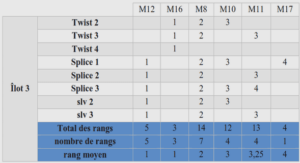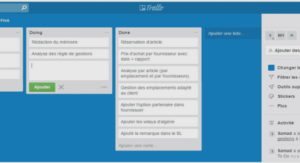GLORIETTE FLOODPLAIN CASE STUDY: EVALUATION A CONCRETE EXAMPLE
This research project aims at evaluating the multi-use in flood management or protection infrastructures. For that, we have previously set up an analytical framework based on five criteria: economic efficiency, technical feasibility, accountability, social justice and vulnerability. These criteria came from the TRANS-ADAPT research program, which aims at evaluating local initiatives concerning the integration of the protection and management infrastructures in the urban development. Therefore, the five criteria have been defined and estimated, based on the current research project, focusing on the multi-use. Indeed, for each criterion, the reasons why it is important or not were explained as well as the reasons why it is important to study, and then, the indicators to measure each criterion were given. At last, a method has been developed in order to adapt our analytical framework, based on the five criteria, for different case studies. In fact, we consider that some criteria can be relevant to evaluate the multi- use for a certain type of flood infrastructures but less for another. In this research project, the Gloriette floodplain (Tours, France) has been chosen as the case study. The objective is to transpose our theoretical analytical framework into a specific method for this case. At the end, we should have an assessment of the multi-use practiced in the Gloriette floodplain but also a critical look back on the analytical framework proposed in this report. Indeed, the importance and the evaluability of each criterion will be studied.
A compromise between urban project and flood management
For that, a presentation of the case study will follow in this report. Different aspects will be presented: the historical context of the Gloriette floodplain, the reasons of this choice of case study and the description of the different activities considered as multi-use in the Gloriette. Then, we will adapt our analytical method based on the five criteria for the case study of the Gloriette floodplain, trying to determine the importance and the evaluability of each criterion. At last, each criterion will be analysed for the case study.Located in the south of the city of Tours, The Gloriette floodplain has been dedicated, in 1994, to receive the Cher floods. This floodplain is not a flood protection infrastructure like a dam or a dike. Indeed, a floodplain is a land adjacent to a river or a stream that is subject to recurring inundations, in others words, it’s an area where water spreads when the stream overflows. So, a floodplain is not a flood protection infrastructure but a flood management infrastructure, according to what was said in the introduction. Moreover, a floodplain is generally a natural area so the term The Gloriette floodplain is especially, a good example of multi-use projects on a flood management infrastructure. To understand what it is nowadays, it’s important to study its history, beginning, into this report, in the 1960’s. Since this date, the Gloriette has been an area under a big land pressure, representing both numerous urban and environmental stakes.
In 1963, the city of Tours, one of the most cramped administrative cities in France, receives a ministerial permission allowing the extension of constructible areas in the South of the city: the Cher valley, a land situated in a flood risk area and only dedicated to the agriculture. Since this date, the area situated between the Pont D’acrole on the East, and the highway A10 to the West is called the Gloriette and will be the subject of an urban planning project. All the projects will be realized under Jean Royer’s mandate (1959-1995), who is biased in favour of the urbanisation of the Cher valley, which is in a flood risk area. Three main phases of the project will follow one another, between 1962 and 1998, and the different districts called “les Fontaines”, “les Rives du Cher” or “Les Deux-Lions”, which are well known today by the inhabitants of Tours, will be built. These urban planning projects were possible thanks to embankment works and a downstream extension of the Cher‘s riverbed, because the river is canalised by means of dams and divided into two arms with a central island now called “le Parc Honoré de Balzac”.



